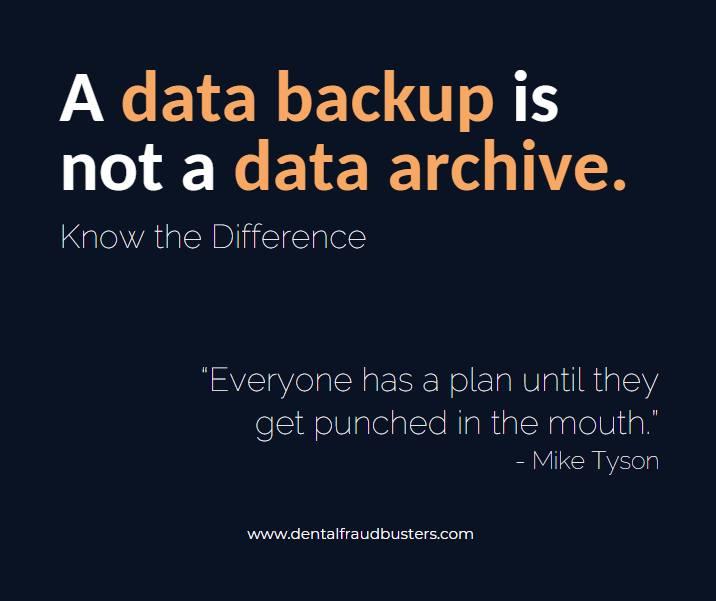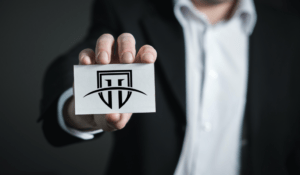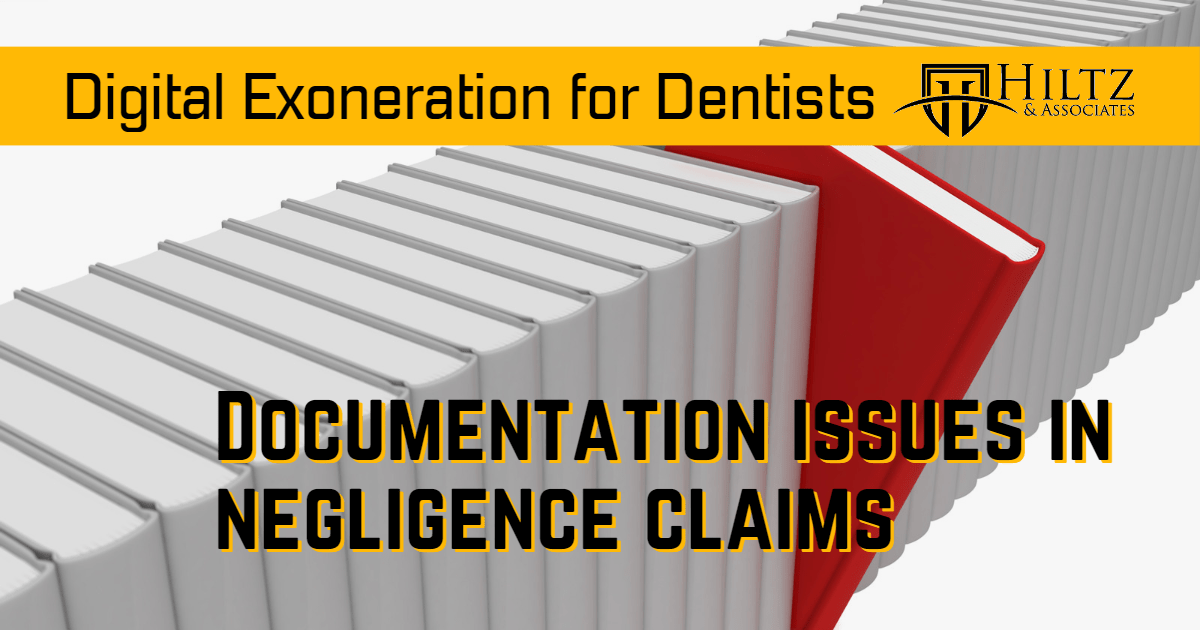Digital Exoneration for Dentists
Dentistry is one of the most litigated professions.
It’s true…
The reality for most dentists is that they can expect to be named in two or more lawsuits during their career with most involving negligence claims related to the delivery and management of patient care.
Documentation issues account for nearly 1/3 of all dental negligence claims paid.
Today, more dental practices use digital technology to document and deliver patient care than ever before – and the “electronic dental record” has virtually replaced traditional paper and film as the preferred documentation choice.
When defending a negligence claim, every dentist is required to provide copies of the patient’s dental records.
The patient’s attorneys will examine the dental records to look for any inaccurate, incomplete, or false entries that can be contested in court or used to argue for the negligence claim?
In every case, the dentist’s electronic dental records are questioned.
In many cases, the dentist’s electronic records are contested.
Dentists who can demonstrate that their electronic dental records are a complete, accurate and faithful representation of events will likely have a more favorable outcome in a legal challenge.
Documentation Issues in Negligence Claims.
Did you know that a lack of effective documentation was cited in 32% of dental malpractice claims, and that omissions, gaps, and timing issues were the primary causes?
Many of these documentation issues could have been avoided.
So, before a legal challenge comes knocking on the door, every dentist should have established written procedures regarding how their electronic dental records are managed and stored. (i.e.: conduct an audit of the current documentation procedures and develop/implement a remediation plan)
Digital Forensics meets the Digital Dental Office
Through my company Hiltz & Associates, I provide expert services to dental attorneys in litigation matters involving malpractice, unethical business conduct and misrepresentation.
Using digital forensics techniques to extract and examine data to determine who did what, and when on a computer.
IMPORTANT LESSONS LEARNED FROM MALPRACTICE CASES
Today’s decisions are based more and more on electronic charts, digital clinical notes and the meta-data surrounding those records.
Here are the two most important “digital” things that dentists can do ensure they can defend against a malpractice challenge when it knocks on their door.
sign (“lock”) your clinical notes, every day, without fail.
Be sure to lock (digitally sign) your electronic clinical notes in a consistent and timely manner. (i.e.: on the same day or within 48 hours)
An unsigned or an unlocked clinical note can be an open-door for plaintiff arguments in a malpractice claim.
By electronically signing (thus locking) your clinical notes, you are attesting to the authenticity and accuracy of the transcript and that the notes were NOT modified or altered since they were first entered.

archive YOUR DATA, monthly is good, weekly is better.
A data archive IS NOT the same as a backup of your Dentrix, Open Dental or other software..
A data archive should have snapshots of your data taken at various given times. If you create a monthly archive, then you will make archival copies of the data (and metadata) each month. A syslog server is also recommended.
By the end year 1, your data archive will have 12 archival copies, one for each month of the year.
By the end of 4 years, you will have 48 archival copies. You get the idea.

If you have questions, or need help in implementing any of the suggestions this article, please contact me for assistance.


